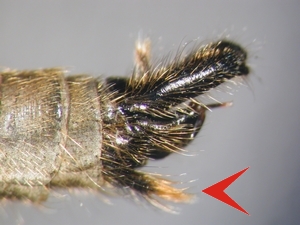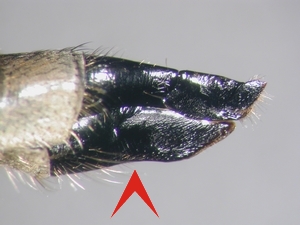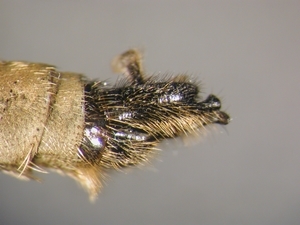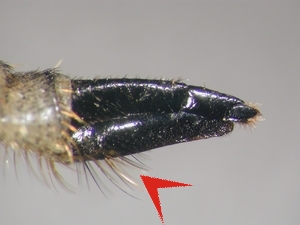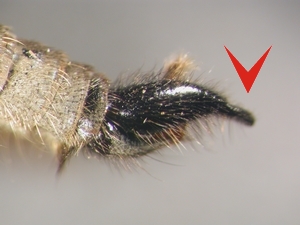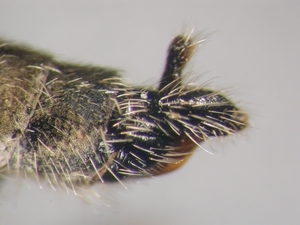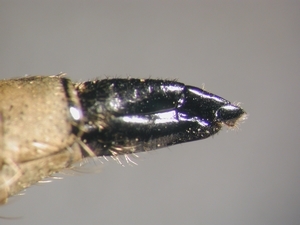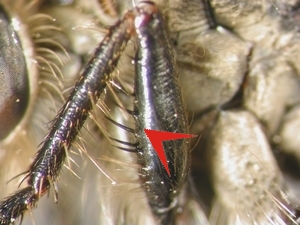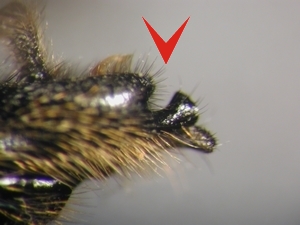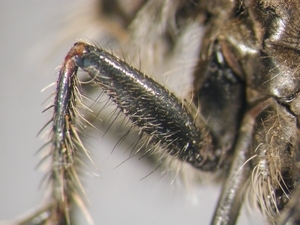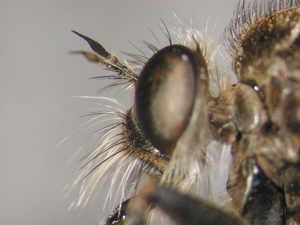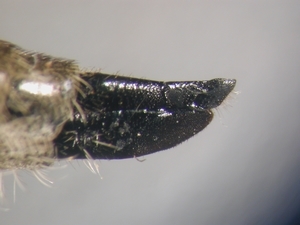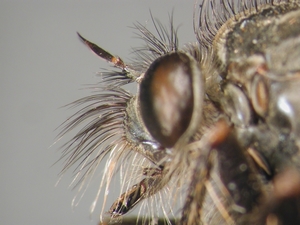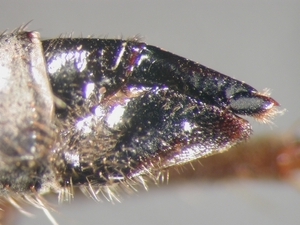g
Start g
- Robber flies of Germany -
[Key] Catalogue Comparisons Notes Terminology
key
- Subfamilies
- Asilinae
Didysmachus
- picipes
Dysmachus
- fuscipennis
- praemorsus
- trigonus
Eutolmus
- rufibarbis
contents & layout
& copyright:
Fritz Geller-Grimm
Imprint
Five species are known from Germany. All of them have a knife-like ovipositor and the cerci are enclosed by the last tergite. The genus Eutolmus can be distinguished by the reduced bristles and hairs on the scutum. Didysmachus differs from Dysmachus only in the shape of the male terminalia. In applying slight differences in male terminalia very strictly several new genera would have to be erected in the future.
A table for comparison of taxa is provided on this CD-ROM.
| 1 a. |
Dorsocentral and acrostichal bristles only poorly-developed or lacking anterior to transverse suture; male: last sternite elongated postero-ventrally [Fig. 1]; emale: ovipositor in lateral view distinctly narrowed medially (ventral margin not straight) [Fig. 2]
. . . . . . . . . . . .
|
| 1 b. |
Dorsocentral and acrostichal bristles well-developed; male: last sternite not elongated posteriorly [Fig. 3]; female: ovipositor ventral margin more or less straight [Fig. 4]
. . . . . . . . . . . .
|
| 2 a. |
Male: epandria long, narrow and apically pointed [Fig. 1]; female: ovipositor antero-ventrally with long hairs [Fig. 2]
. . . . . . . . . . . .
|
| 2 b. |
Male: epandria short and broad or bifid apically [Fig. 3]; female: ovipositor antero-ventrally with only short hairs [Fig. 4]
. . . . . . . . . . . .
|
| 3 a. |
Front femur ventrally with stout bristles [Fig. 1]; male: epandria apically distinctly bifid [Fig. 2]
. . . . . . . . . . . .
|
| 3 b. |
Front femur ventrally with only weak bristles [Fig. 3]; male: epandrium dorsally without any indentation or with only slight indentation [Fig. 4]
. . . . . . . . . . . .
|
| 4 a. |
Distance between antennal base and facial gibbosity greater than length of scape [Fig. 1]; dorsal margin of ovipositor apically curved upwards (lateral view) [Fig. 2]
. . . . . . . . . . . .
|
| 4 b. |
Distance between antennal base and facial gibbosity shorter than length of scape [Fig. 3]; 1]; dorsal margin of ovipositor apically curved downwards (lateral view) [Fig. 4]
. . . . . . . . . . . .
|
